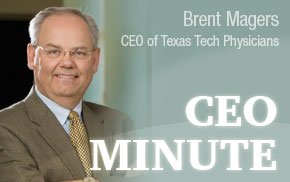 It would be a great exaggeration to say that Marc Siegel, M.D., professor of medicine
at New York University Langone Medical Center, is an acquaintance. He is not. I have
never met the man. But, I am an admirer of his knowledge of medicine, particularly
as it relates to current events. I often listen to him on SiriusXM when he is a guest
on a program called “Doctor Radio.” Siegel wrote a book called “False Alarm: The Truth
About the Epidemic of Fear.” While I have not read the book, I did listen to him discuss
it recently for about two hours and found it fascinating. The book is about the danger
of not immunizing children. I realize this is a controversial topic to some, but the
recent measles outbreak that started at Disneyland in California has brought the matter
to the forefront.
It would be a great exaggeration to say that Marc Siegel, M.D., professor of medicine
at New York University Langone Medical Center, is an acquaintance. He is not. I have
never met the man. But, I am an admirer of his knowledge of medicine, particularly
as it relates to current events. I often listen to him on SiriusXM when he is a guest
on a program called “Doctor Radio.” Siegel wrote a book called “False Alarm: The Truth
About the Epidemic of Fear.” While I have not read the book, I did listen to him discuss
it recently for about two hours and found it fascinating. The book is about the danger
of not immunizing children. I realize this is a controversial topic to some, but the
recent measles outbreak that started at Disneyland in California has brought the matter
to the forefront.Siegel says that before 1963, when the measles vaccine became available for public use, there were more than 500,000 reported measles cases every year, and 48,000 people were hospitalized. Furthermore, on average, there were 432 deaths per year from measles, and 4,000 people developed measles-associated encephalitis (brain swelling). Compare those numbers to current data showing the annual number of people reported to have measles has ranged from a low of 37 people in 2004 to a high of 644 people in 2014, according to the Centers for Disease Control and Prevention (CDC).
Measles can be prevented with the measles, mumps and rubella (MMR) vaccine. One dose of MMR vaccine is about 93 percent effective at preventing measles if exposed to the virus, and two doses are about 97 percent effective, according the CDC. Siegel reminds us that the measles is a highly contagious disease with an attack rate of 90 percent, meaning an infected person has a very high likelihood of spreading it to someone else in a risk population with whom he or she comes in close contact. Compare this rate to the flu virus, which has merely about a 25 percent attack rate and is also considered highly infectious, and you can see why the measles has so many parents and physicians concerned.
Texas Tech Physicians immunizes thousands of people each year, many of whom are children. I will leave it to the expert physicians on our faculty to make the scientific case for immunizations. I will just say, as a layperson (and a parent of two grown men who had all of their “shots” on time), I am proud that our practice is involved in helping so many people secure the vaccines they need to stay healthy.
I was born in 1954, two years after polio hit its peak in 1952. More than 57,000 cases were reported throughout our nation that year, resulting in 3,145 deaths. In 1955, something wonderful happened. Thanks to a tremendous public health effort, Jonas Salk, M.D., developed a vaccine that was given to children across America. By 1979, the U.S. was polio free. I know there are occasional and very rare complications from vaccines, but overall, the benefits greatly outweigh the risks. I am very grateful for our modern vaccines.
